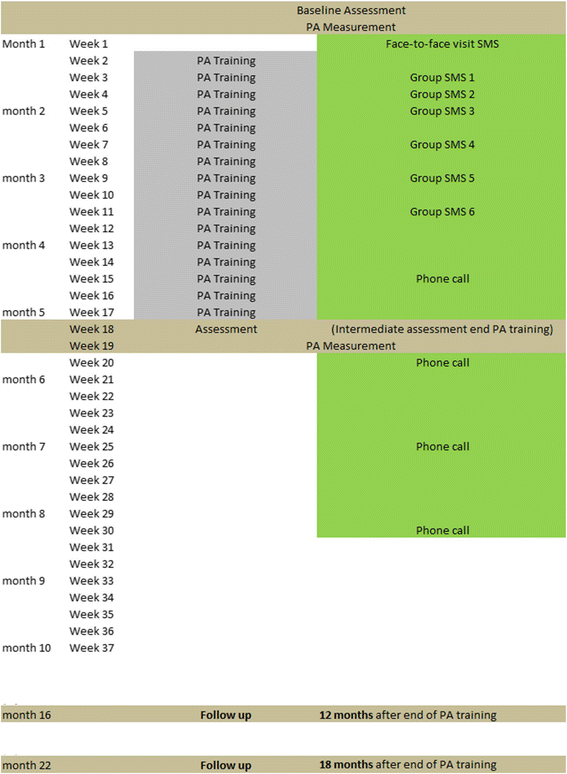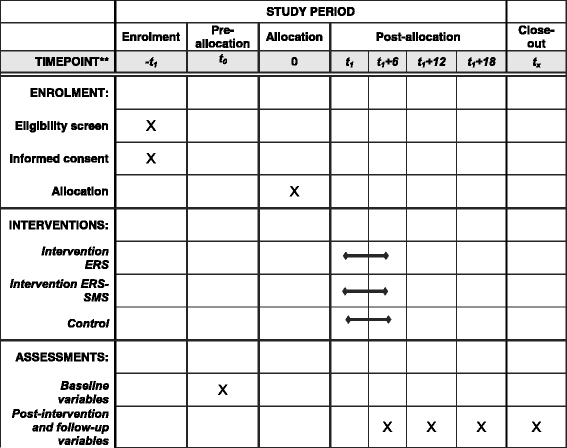The SITLESS project: exercise referral schemes enhanced by self-management strategies to battle sedentary behaviour in older adults: study protocol for a randomised controlled trial
- PMID: 28521831
- PMCID: PMC5437412
- DOI: 10.1186/s13063-017-1956-x
The SITLESS project: exercise referral schemes enhanced by self-management strategies to battle sedentary behaviour in older adults: study protocol for a randomised controlled trial
Abstract
Background: Older adults are the fastest growing segment of the world's population. Recent evidence indicates that excessive sitting time is harmful to health, independent of meeting the recommended moderate to vigorous physical activity (PA) guidelines. The SITLESS project aims to determine whether exercise referral schemes (ERS) can be enhanced by self-management strategies (SMSs) to reduce sedentary behaviour (SB), increase PA and improve health, quality of life and function in the long term, as well as psychosocial outcomes in community-dwelling older European citizens from four countries, within a three-armed pragmatic randomised controlled trial, compared with ERS alone and also with general recommendations about PA.
Methods: A total of 1338 older adults will be included in this study, recruited from four European countries through different existing primary prevention pathways. Participants will be randomly allocated into an ERS of 16 weeks (32 sessions, 45-60 min per session), ERS enhanced by seven sessions of SMSs and four telephone prompts, or a control group. Outcomes will be assessed at baseline, month 4 (end of ERS intervention), month 16 (12 months post intervention) and month 22 (18 months post intervention). Primary outcomes will include measures of SB (time spent sedentary) and PA (counts per minute). Secondary outcomes will include muscle and physical function, health economics' related outcomes, anthropometry, quality of life, social networks, anxiety and depressive symptoms, disability, fear of falling, executive function and fatigue. A process evaluation will be conducted throughout the trial. The full analysis set will follow an intention-to-treat principle and will include all randomised participants for whom a baseline assessment is conducted. The study hypothesis will be tested with mixed linear models with repeated measures, to assess changes in the main outcomes (SB and PA) over time (baseline to month 22) and between study arms.
Discussion: The findings of this study may help inform the design and implementation of more effective interventions to reduce SB and increase PA levels, and hence improve long-term health outcomes in the older adult population. SITLESS aims to support policy-makers in deciding how or whether ERS should be further implemented or restructured in order to increase its adherence, impact and cost-effectiveness.
Trial registration: ClinicalTrials.gov, NCT02629666 . Registered 19 November 2015.
Keywords: Behaviour change; Older adults; Physical activity; Sedentary behaviour; Self-management strategies.
Figures
References
-
- World Health Organization, United States National Institute of Aging . Global health and ageing. Geneva: WHO Press; 2011.
-
- World Health Organization . Global recommendation on physical activity for health. Geneva: WHO Press; 2010.
-
- Economic Policy Committee. Budgetary challenges posed by ageing populations. 2001. http://ec.europa.eu/economy_finance/publications/pages/publication7196_e.... Accessed 15 Mar 2015.
Publication types
MeSH terms
Associated data
LinkOut - more resources
Full Text Sources
Other Literature Sources
Medical



